what is the tendency for statistical results to fluctuate from one sample to another
After reading this article you will learn about the measures of central tendency:- 1. Arithmetic Average (Hateful) ii. The Median 3. The Mode.
Arithmetic Average (Hateful):
Mean is calculated when data are complete and presented on equal interval scale. The arithmetic average or mean is quite simple and well-nigh widely used and is hence called 'Common Boilerplate' or even merely 'Boilerplate'. It is a measure out of central value. It is a method of representing whole information past one effigy and takes into consideration all the items. Mean provides an authentic description of the sample and indirectly, that of population.
It is the sum of measurements divided by their number. Mean of a distribution of scores may exist defined as the point on the scale of measurement obtained by dividing the sum of all the scores by the number of scores.
In other words arithmetics mean is the sum of the separate scores or measures divided by their number. If a man earns Rs. 300, Rs. 400, Rs. 450, Rs. 500 and Rs. 550 on 5 successive days,his hateful daily wage (Rs. 440) is obtained by dividing the sum of his daily earnings past the number of days he has worked.
The formula for the mean (G) of a series of ungrouped measures is:
![]()
where ∑ hateful sum total of,
N is the number of measures in the series,
10 stands for a score or other measure.
Calculation of Hateful from Ungrouped Data :
The arithmetics mean for ungrouped data can exist calculated by using any of the following two methods:
i. Direct method.
ii. Brusque-cut method.
(a) Directly Method:
In case of ungrouped information we are always given some measurements on a variable Ten say 101, Xii, X3 ……………………… Xnorth are 'north' items then the arithmetic mean (10) of these items is equal to
![]()
where x = Mean
northward = No of items
X = Score
∑ = Sum total of
Example 1:
The weights of 5 students are observed every bit 50, 45, 70, 55 and 65 kgs respectively. Find the average weight of the students.
Solution:
Five measurements on a variable weight X are given Xane = 50, Ten2 = 45, Teniii = 70, X4 = 55 and Xfive = 65.
The mean weight of the grouping
![]()
(b) Brusque-cut Method (Ungrouped Data):
By choosing an assumed mean and calculating deviations of the given variates or observations from it makes the calculation of mean simpler. This boilerplate is usually chosen to be a neat circular number in the middle of the range of the observations, then that deviations can be hands obtained by subtraction.
Then, a formula, based on deviations from assumed mean, for calculating arithmetic mean becomes:
![]()
where A.M. = Assumed Mean,
∑ = Sum total of,
d = The departure of each value of the variable from the Assumed Mean,
N = Total Nos.
Example 2:
A random sample of 10 boys had the following intelligence quotients (I.Q's).
seventy, 120, 110, 101, 88, 83, 95, 98, 105, 100 Observe the hateful I.Q.
Solution:
In this example, the ungrouped data ranges from 70 to 120. Therefore, 95 a bully round value in the middle of lxx and 120, may be taken as assumed mean, i.e., A.M. = 95.
Deviations and sum of deviations needed in formula (03) may be calculated in a tabular array given below:

Using formula (03) the arithmetics hateful will be:

Remarks. 1:
If nosotros will compare direct and short-cut methods of computing arithmetics mean for ungrouped data, we run into that the latter does not seem to be shortening the procedure. Though, short-cut method uses deviations to reduce calculations to a marked extent yet their computation needs extra tabulation which tend to make it a rather lengthy process.
Brusque-cut method should exist used where the given observations are likewise large or in fractions. However, if the observations are not likewise large or a motorcar figurer is available, the direct method is good enough for calculating arithmetic mean for ungrouped data.
ii. Choosing the assumed mean in the middle of the range of information gives negative d's which might be us-petting to deal algebraically. In such a state of affairs, one can cull 'A.Thousand.' as a neat round number less than or equal to the minimum variate or observation to get all the d's to be positive.
Calculation of Mean from a Grouped Data :
Adding of arithmetic mean for a frequency distribution can too be washed with the post-obit two procedures:
(a) Directly Method/Long Method.
(b) Brusk-cut Method/Assumed Mean Method.
(a) Straight Method/Long Method :
There can be two situations of grouped data:
(A) When scores and frequencies are given; and
(B) When data take been grouped i.e. frequency is given for each class interval. In the second ease we may compute either past long method or by short method, using the assumed mean.
These are explained below:
(A) Calculating Mean when Scores and Frequencies are given:
Case iii:
Compute Hateful for the following information:

Solution:
We use the following formula:
![]()
where X = Score
f = Frequency
Northward = ∑f =Total number of cases (Frequencies)
Steps:
The steps involved in the computation process may be listed every bit:
(i) Multiply the frequency (f) with corresponding variate to get the column f10. Sum this cavalcade to go ∑fX.
(2) Calculate sum of the given frequencies as ∑f = N
(iii) Apply formula (04) to go the arithmetic mean.

(B) Calculating Mean from Grouped Frequency Distribution: (Direct Method/Long Method):
When grouped frequency distribution is given, the Mean is calculated using the post-obit formula:
![]()
where X = Mid bespeak of the course interval
f = Frequency
N = ∑f= Full number of cases
Hither an assumption is fabricated that all frequencies are concentrated at the mid point of the class interval. So mid points of course intervals are used for scores.
Example 4:
Compute the mean for the post-obit frequency distribution:

Solution:
For each C.I. we accept to compute the mid point (X) in the third column. And then nosotros have to multiply the mid-points with the frequencies (f) i.e. for each C. 1. we have to calculate fX. Next, we have to add all fX'south in column 4. At present ∑fTen = 1335. Information technology ways that the total marks of all the 50 students is 1335. To become hateful nosotros divide the total past 50. Thus, 1335 divided by 50 gives 26.7 every bit the mean.

(b) Short-cut Method/Assumed Mean Method :
In the Assumed Mean Method we effort to avoid lengthy calculations of multiplications of mid-points of class intervals with corresponding frequencies. First of all, we locate a class that lies almost at the middle of the distribution. Its mid-point is taken as the Causeless Mean (A.1000.).
Now the class intervals effectually this, i.e. the called class interval for (A.Grand.) would be 1, 2 or iii form intervals above and below it. Then deviations from this class interval would exist +1, +2, +3 etc. and -one, -2, -3 etc. in the subsequent class intervals containing higher and lower scores respectively on the two sides.
These figures are obtained by subtracting the A.Yard. from the mid point of the form interval and dividing by the size of the grade interval. Still, this calculation is non required in regular practice while solving the questions.
Steps:
The steps involved in the calculation of Mean (Table 3.4) may be summarised equally beneath:
i. Accommodate the data in a tabular class i.e. making columns for form interval (C.I.), frequency (f).
2. Then to set (d) column. Simply if the students know how to fill in the column for (d), the rest is easier, ('d) is commonly the divergence of the midpoints of the (C.l's) from the assumed hateful (A.M.) in terms of course interval units (i). 'd' can be obtained by using the post-obit formula, 'd' of a given c.i.

where Xi = Mid-point of the given c.i.
A.M. = Causeless Mean
i'= Size of the c.i.
i. Now fill up the cavalcade for 'd'. Write 0 (zero) confronting the c.i., where the hateful was assumed. Then write the subsequent deviations above it and below information technology. For the table 3.4 'd' for the c.i.'south 30-34, 35-39, 40-44 will be +1, +2, +three respectively and 'd' for the c.i.'s twenty-24, 15-19, ten-14 will be marked -i, -2, -three respectively.
2. Adjacent, we calculate fd for each row by multiplying f value and 'd value of each row.
3. Then we add all the fds to get ∑fd
Now use the formula:

Where A.M. = Causeless Hateful
i' = Size of the c.i.;
f = Frequency
d = Deviation of the mid-points of the c.i.'s from the causeless mean in class interval units.
N = Total number of frequencies; ∑ = Sum total of
Note. Every bit we have assumed the mean, the A.M. must be corrected to become the truthful mean.
![]()
The above formula can be written as:
![]()
Instance 5:
Compute mean for the post-obit information (c.i's and/'s are given).
Table iii.four Computation of Arithmetic Hateful (Short-cutting Method):
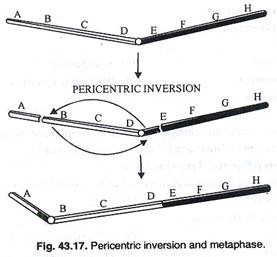
Note that we have used exact limits for computing the Assumed Mean. Here nosotros take taken AM to be 27.

Example six:
Nosotros shall calculate the mean of the distribution given in table 3.5 by using long method and too by using short method.
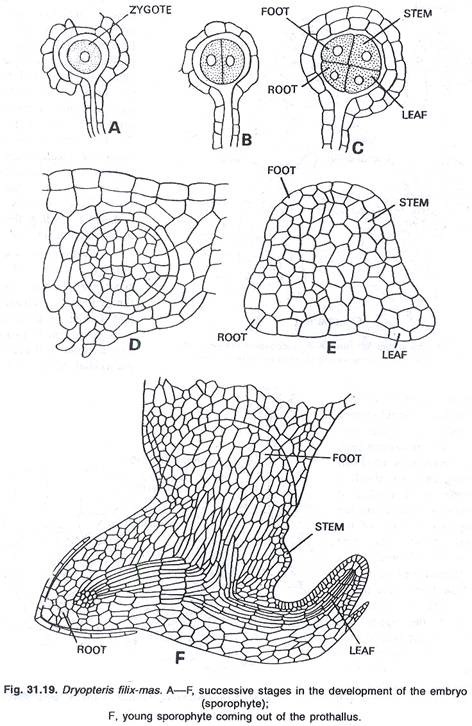
Special Examples :
i. In some frequency distribution the lower course intervals are at the top and increment towards higher class intervals at the bottom. In such a case marking of 'd is to be washed with caution.
Here, it may be noted that lower marks are to the top and as such mid-points of the c.i.'s above the c.i., xl-49 will be less than 44.5. Then deviations are marked negative (-). Again deviations of mid-points of c.i. 's below the c.i. 40-49 volition be marked positive (+). Afterward cfs are properly marked, the hateful can be calculated.

There is another way of computing the mean for the in a higher place example. Kickoff of all we can rewrite the distribution with college c.i.'s at the height and the lower c. i. 's to the bottom. Adjacent, nosotros tin can compute the mean as usual. This method is preferable.
two. In some distributions there are sure gaps. In distribution A, there are some gaps. In such cases the distribution is rewritten as in distribution B (i.e., all the c.i. 's are written continuously).To betoken that there is no ease in that particular c.i. nosotros write its frequency to be zero. Adjacent, after assuming the mean, we can marker the ds as usual. And then we tin can compute fd's and apply the formula to go the mean.

Combined Hateful (or Weighted Hateful):
Iii groups of students namely Group A, B and C have appeared a exam. The force of these three groups are 50, 40 and 30 and their mean scores are 39, 42 and 36 respectively.
What would exist the hateful score of all the students of these 3 classes? In this case we desire the combined mean That is, if all the students of three groups are combined, what would be the hateful? This is calculated past the following formula when the number of groups is northward.
![]()
Example seven:

As we know the total number of students and the hateful score, it is obvious that the total score of all the fifty students of group A will be 39 Ten 50 i.e., 1950. In a similar fashion the total score of group-B will exist 42 ten 40 i.eastward. 1680 and grouping C volition be 36 ten 30 i.e. 1080.
If all the students of all the three groups are combined at that place will be 50 + 40 + 30 i.e. 120 students and total score of these 120 students will be 4710. So, the
![]()
The formula of the combined mean:
![]()
where Due north1, N2, N3 are the full number of cases in group-i, group-2 and group-3 respectively and K1, Thousand2, M3 are the mean of group 1, 2 and three respectively.
M, = 39 and N, = 50
M2 = 42 and Nii = 40
Mthree = 36 and N3 = xxx
Where two = Sum total of X = Score
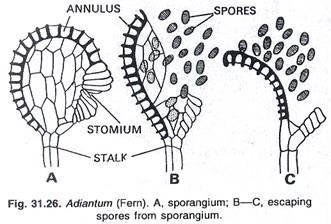
Mathematical Properties of Arithmetic Mean :
Arithmetic hateful possesses some very interesting and important mathematical backdrop every bit given below:
Property i:
The algebraic sum of the deviations of the given set of observations from their arithmetics mean is naught.
![]()
Allow us consider the post-obit example


If the number of observations (Northward) and their boilerplate ten are both given, the sum of the observations ZX tin can be obtained past using formula (09). Let us take an example.
Example eight:
The arithmetic mean of historic period of six students is 12 years. The individual ages of v of them are 10, 9, 12, 13 and 13 years. Discover the age of the 6th pupil.
Solution:
Here, the mean historic period of six students is given to exist 12 years, i.e. Due north = 6 and 10 = 12 years. Therefore, the sum of ages of 6 students, i.e.,
![]()
= half dozen x 12 = 72 years
Likewise, the sum of ages of 5 students
= 10 + nine + 12 + thirteen + 13 = 57 years.
Thus, the age of the sixth student
= 72 – 57 = fifteen years.
Belongings 3:
If the two groups have Nane and N2 variate values or observations with X̅1, and X̅2 as their respective arithmetics mean, the combined arithmetic mean (X̅12) of the ii groups is obtained by using the formula;
![]()
The following instance will demonstrate the use of the to a higher place property.
Instance nine:
25 boys and 15 girls in a class appeared in an test. The average form for boys and girls were five and 6 respectively. Detect the average grade of all the 40 students in the class.
Solution:
Here, we are given that N1= 25, Northward2= xv
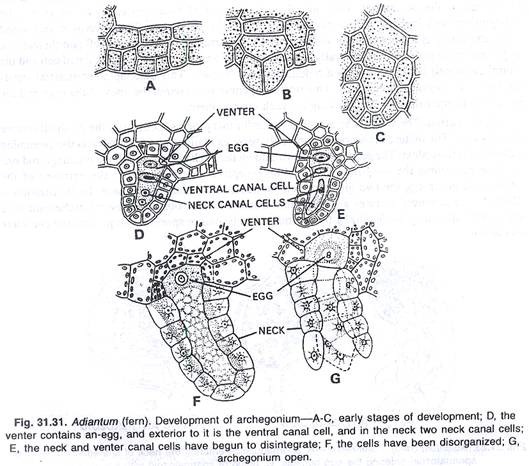
Belongings 4:
Mean is the representative score of a distribution. That is, each score is every bit represented in the hateful. Whatsoever change in a score affects the mean. In other words, mean gives equal weightage to each score in a distribution.
Permit us take an instance and see how mean is affected:
(i) if nosotros add a abiding to individual scores.
(ii) if we subtract a abiding from individual scores.
(iii) if individual scores are multiplied by a abiding.
(iv) if individual scores are divided by a constant.
Let, at that place be 5 scores, 30, 40, 60, 80 and 90.
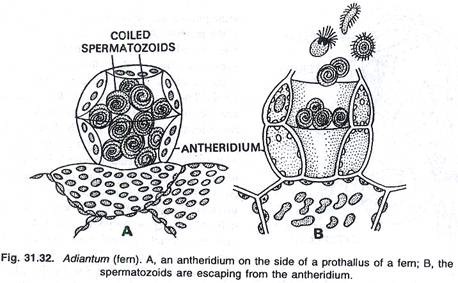
If nosotros accept any other abiding other than 5, shall get the same result.
In a general way we can limited that:
(i) When a abiding is added to individual scores, the hateful increases past that constant.
(ii)When a constant is subtracted from individual scores the hateful decreases by that constant.
(iii) When the private scores are multiplied by a constant, the hateful is also multiplied past that abiding.
(4) When the individual scores are divided past a constant the mean is too divided past that constant.
Property 5:
The sum of the squares of deviations of the given set of observations is minimum when taken from the arithmetics mean.
Estimation of Hateful :
Hateful represents the centre of gravity of the scores. Measurements in whatsoever sample are perfectly counterbalanced most the mean. In other words the sum of deviations of scores from mean is always zero. In computation of hateful all observations are taken into consideration.
This is preferred considering of its high reliability and its applicability to inferential statistics. The mean indicates the average performance of the members of the group. Information technology is use to give an idea about how varied are the scores from the fundamental value.
Merits of the Mean :
Of all the types of averages, the arithmetic hateful is more commonly used is even known as 'Common average'. There are many reasons for this popularity.
Some of the reasons are:
1. Information technology tin exist easily calculated and is simplest to empathize. Information technology tin can be determined in well-nigh of the cases.
2. It is most readily understood by persons of mediocre intelligence. It is virtually popular because information technology can be readily understood of all the averages.
3. It can be subject to algebraic manipulation and helps in farther assay and estimation of statistical data.
4. Information technology is afflicted by the presence of every item in the group and in this mode boilerplate is based on all the observations a feature that an average must possess.
5. If the number of observations or items is sufficiently large, information technology is more than accurate and more than reliable basis for comparison.
6. It is rigidly defined and leaves no scope for deliberate prejudice or personal bias. It's value is definite.
7. It tin be located even without arranging data in a set form.
8. It can be determined even when the aggregate and the number of items are known and the information well-nigh the individual items is missing. Similarly, if the number of items and the average of the series are known, we can calculate the aggregate.
9. It satisfies nigh of the conditions laid downwards for an ideal boilerplate.
Limitations of Hateful :
1. The hateful, sometimes, gives us results which are cool. For example the mean of the family unit size (No. of persons in the family) in a locality may exist 4.62 which seems to be absurd. (A person can't be divided into fractions).
ii. Sometimes, the mean values practise not exist in the series at all. For example, the mean of 10, 17,xviii and 19 is sixteen which does not be in the series. The students may confuse as to how a score which is net there in the series can correspond the scores.
3. Sometimes Mean of a distribution is highly misleading especially when some of the observations are too large or also small as compared to the others.
Mark the following:
(a) The mean score of 2. 85, 88, fourscore and 85 is 68
(b) The mean score of 15, 12, 13, twenty and 2295 is 471
Nosotros may annotation here that in example (a) 68 is not a representative score and in instance (b) 471 is not a representative score. In showtime example the particular score, 2 gives rise to a lower value of the hateful and in second case the score, 2295 gives rising to a higher value of the mean.
4. Further, the mean can't be calculated if a single score is not known, whereas in such cases median and fashion can exist calculated.
5. If in a grouped data the c.i. is of unspecified length, nosotros tin't compute the mean.
See the post-obit instance:

In this case the c.i, 'fifty and above' and the c.i. 'below 20' are of unspecified length. Therefore, we cannot notice the mid-point of this c.i.'s and every bit such we cannot compute mean.
6. In the absence of actual figures, it may pb to fallacious conclusions. The average income of ii employees maybe the same even so ane mayhap progressing from low percentage while the other may exist deteriorating from high.
seven. Information technology cannot exist used in the study of qualitative information which is incapable of numerical expression.
Uses of Mean :
Mean is used when:
1. Scores are nearly symmetrically distributed around a central indicate i.e., distributions are not markedly skewed.
2. Nosotros wish to know the centre of gravity of a sample.
3. Central trend with greatest stability is wanted.
4. When other statistics (standard deviation, coefficient of correlation, ANOVA and ANCOVA, etc.) for inferential purposes are to exist calculated.
five. Group performances are to be compared with accuracy and precision.
vi. When scores are to be properly interpreted or when standard scores are to be computed.
7. When there are no farthermost cases to affect the measure of central tendency.
viii. When there are no class intervals of unspecified length.
ix. When further algebraic treatment of the average is required.
The Median :
When data have been bundled in rank order the measure out of primal tendency may be found by locating a point that divides the whole distribution into two equal halves. Thus median may exist defined every bit the the point on the calibration of measurement below and above which lie exactly 50 pct of cases.
Median tin can therefore be found for truncated (incomplete) data provided we know the total number of cases and their placements on the scale. It may be noted that median is defined equally a point and not as a score or any item measurement. It is positional average because its value is adamant with reference to its position in the value column of a series.
In the Collins Dictionary of Statistics, it is defined as the middle value in a distribution, below and above which lie values with equal total frequencies or probabilities.
Median in Ungrouped Information :
In example of ungrouped data the scores are arranged either in ascending order or in descending order. Then the mid-point is found out, which is the median.
In this process two situations arise in computation of median:
(a) North is odd
(b) North is even
(a) First nosotros shall discuss how to compute median when N is odd.
Example 10:
Discover the Median for the scores:
2, 5, nine, eight, 17, 12, 14
Solution:
Here, we accept seven scores.
On arranging them in ascending (or descending) society we may have the sequence of scores as under:
2, v, 8, 9, 12, 14, 17
In ungrouped data:

(b) Allow us talk over how to summate Median when N is even.
Case 11:
Suppose we are given mental ages of 8 students:
7, 10, half-dozen, 8, 13, 9, 10 and eleven. Detect the median mental age.
Solution:
Here, the number of observations is eight, which is an even number. Thus, there will be two heart values in the array and their boilerplate volition be the median. To solve the problem we have to arrange in order of size
6, 7, 8, ix, x. 10, 11, 13
Now applying the formula nosotros become:
![]()
Here in guild to find out 4.5th term we have to notice out the average of 4th and fifth detail/value
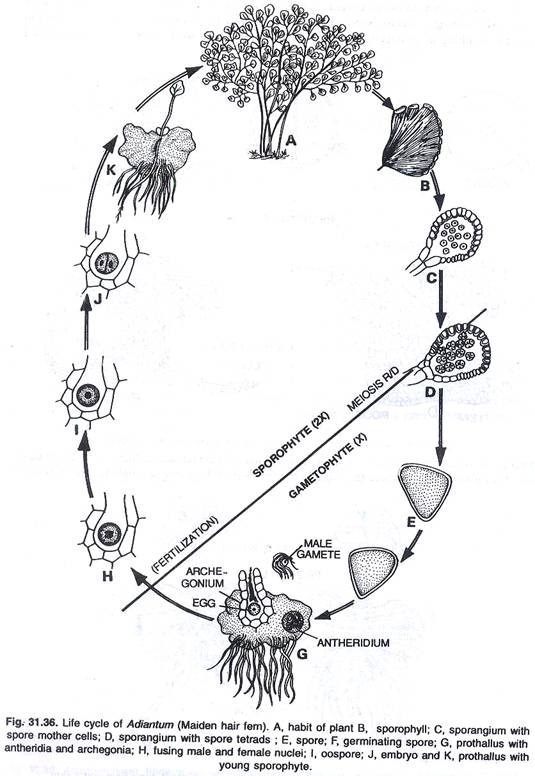
Median in Grouped Data :
Median is a signal on the scale of measurement below which lie exactly fifty per centum cases. Manifestly fifty percent eases volition be in a higher place it. For calculating the median, the assumption made in case of grouped data is that frequencies are evenly distributed within the form interval.
The formula to find out median from grouped data reads every bit post-obit:
![]()
Where L = Lower limit of the Median class.
Median grade is that class whose cumulative frequency is equal to or greater than the value of N/2
N/two = Half of the total number of scores
F = Cumulative frequency below the Median Form
fm = Frequency of the Median Grade
i = Size of the class interval.
Steps to compute median from grouped data:
Footstep-1:
Compute Due north/2 i.e. 50% of the distribution
Pace-two:
Compute the cumulative frequency of the distribution from lower terminate.
Pace-iii:
Observe out the median grade. The cumulative frequency of the class interval where N/ii ≥ c. f.
Step-iv:
Find out F. the cumulative frequency below the median grade.
Step-five:
The frequency of the c.i., upon which the median falls.
Example 12:
Discover median for the frequency distribution given in Table 3 .8.
Solution:
In post-obit table it tin can be seen that N/2 = 40/2 = 20.
We have to find a indicate below and above which lie 20 cases. At that place are 13 cases in top 3 class intervals and xix cases in the bottom four grade intervals. The point segregating the values into two halves may exist constitute in class interval xxx-34 which has 8 cases in information technology. Information technology is thus called the Median form.

L = 29.5. Because the Northward/two i.due east. twenty is included in the cumulative frequency of the class interval 30-34, and the exact limits of the c.i. = 29.five.
F = 19. The cumulative frequency below the median class.
fm = viii. The verbal frequency of the median grade.
I = 5. Size of the class interval.
At present putting the value into the formula:

Case 13:
(Computing median from upper limit):
We have to apply some other formula when nosotros count the frequencies from the top.
The formula is given below:
![]()
Where U = Upper limit of the median grade
F = The cumulative frequency of the class interval higher up the median form.
fm = Frequency of the median class.
i = Size of the class-interval.
Steps:
In ease of computing median from upper limit the only difference is nosotros have to compute cumulative frequency from the upper end.
Now, allow us have the distribution given in tabular array 3.9. Permit us go on adding the frequencies from the top till we reach 40. Doing so we discover that median lies in the c.i. 120-124.

Here North/two = 40
U = 124.5. Because the cumulative frequency 53 includes the N/2 i.e. 40.
F = 37. Cumulative frequency of the class interval above the median grade.
fyard = 16. Frequency of the median form, i' = 5.
Past applying formula -(11)
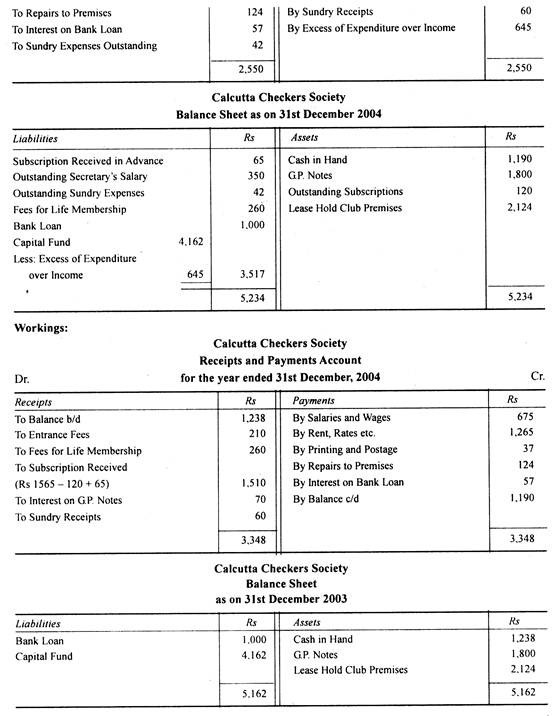
Case 14:
(Computing Median when N/2 = F):
Compute the median of the following distribution:
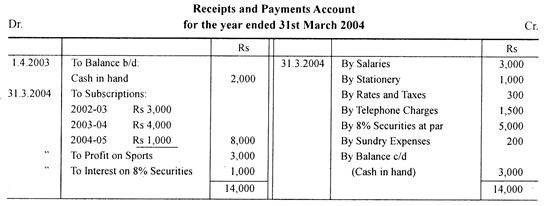
Here North = 40 and so N/ii = 20. Allow us go on adding the frequencies from the bottom. We notice that 4 + half-dozen + x = xx and nosotros need no more than. In such a case, clearly 139.5 is the median considering beneath 139.v there are 10 + 6 + 4 i.e. 20 cases and above it in that location are 2 + 5 + vi + 7 i.eastward. 20 cases. Why 139.5 is the median?
As median is the signal on the calibration of measurement beneath and in a higher place which lie exactly 50 pct of cases. In this case 139.v is the point below and to a higher place which 50% of cases i.due east. 20 cases lie. So 139.5 is the median. In such cases nosotros can locate the median by mere inspection and we need non use the formula.
Of form the formula tin can be used. We wanted to accomplish 20 cases and upto the c.i. 130-139 we added the frequencies to be 20. So, we need no more cases from the c.i. 140-149. If we assume the median to be in the c.i. 140-149,

If we count from the top we shall get the aforementioned result.
Notation 1:
When Due north/2 = F, and we are counting the frequencies from the bottom, the median is the upper limit of the c.i, in which we got F = N/ii.
Note 2:
When N/2 = F and we are counting from the top, the median is the lower limit of the c.i. in which we got F = N/two.
Example 15:
(Where there are no cases within the interval containing median):
In that location may arise a special situation where at that place are no cases inside the interval containing the median.
Let us take an example.
Find the median for the post-obit frequency distribution:
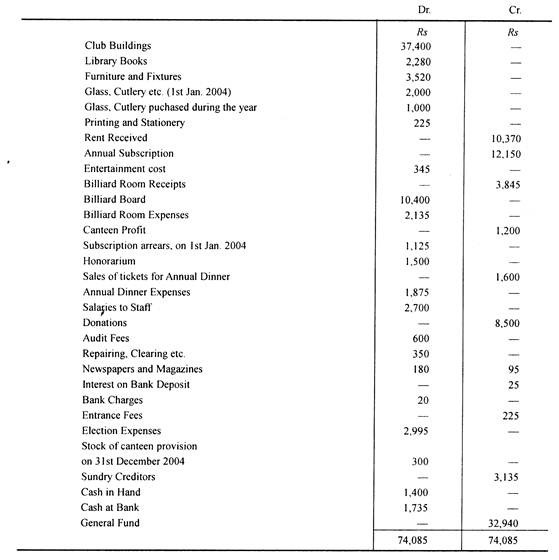
If we examine the above table for computing median we meet N/2 34/two = 17 against two class intervals showing cumulative frequencies. If one calculates median mechanically he/she may arrive at a wrong answer.
So it will not be and then simple to apply the formula and get the results. Also, if you calculate cumulative frequency from to a higher place, another course interval (17-19) may also prove 17 as cumulative frequency. Nosotros will solve this question in two alternative ways (i) conceptually and (ii) empirically.
Solution one:
On counting number of cases from peak and bottom sides we find that there are 17 cases to a higher place xvi.5 and 17 cases below 13.five. We are coming beyond ii points (instead of 1) beneath and higher up which lie exactly fifty percent cases as the class interval fourteen-xvi is void (without any frequency).
So extending the supposition to this class, (that frequencies are evenly distributed within each form interval) nosotros may add half of this void form interval to either side and observe median.
So median = 13.5 + three/2 = thirteen.5 + 1.5 = 15 (Answer)
or Median = sixteen.five – 3/2 = 16.five – 1.v = fifteen (Answer)
Solution 2:

Alternatively, we change the class interval where North/two may fall. The course interval with zippo frequency which is affecting calculation is adapted towards the adjoining class intervals on either side and the size of the modified class interval is used while applying the formula.
Half of the grade interval 14-sixteen has been adjusted towards the form intervals 11-thirteen and 17-19 respectively. The modified form intervals are as x.v to xv and fifteen to 19.5 in terms of verbal limits (modified size of grade interval being 3 + ane.5 = 4.5).
![]()
where Fifty = ten.5 ; F = 8 ; N/2 = 17 fm = nine ; i = 4.5 (modified)
![]()
Nosotros tin take some other example where there are two zeros within the intervals containing median.
Find the median for the following frequency distribution:
![]()

The two class intervals i.e. xx-24 and 25-29 with naught frequency which are affecting calculation are adapted towards the adjoining class intervals on either side and the size of the modified class intervals is used while applying the formula.
The course interval 25-29 is adjusted towards xxx-34 and the grade interval 20-24 is adjusted towards fifteen-19. The modified class intervals are as fourteen.five to 24.5 and 24.5 to 34.5 in terms of exact limits (modified size of class interval being 5 + 5 = 10).
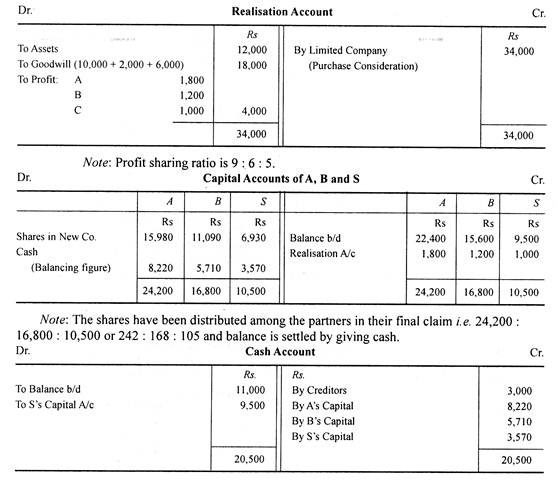
Interpretation of Median:
The median represents the central signal of data where frequencies are halved. In the above example there are 50% of cases namely 25, having scores above 44.v, i.east. the median.
Claim of Median :
(i) Information technology is an ideal boilerplate, for it is rigidly defined.
(ii) It is easy to computer and understand.
(iii) It is not affected by the value of the farthermost items (i.e., skewness) and as such is sometimes more than representative than the mean.
If the incomes of five persons are Rs. 300, Rs. 350, Rs. 400, Rs. 450 and Rs. 10,000, the median would be Rs. 400, whereas the hateful would exist Rs. 2,300. The median in such cases is a better average.
(four) Its ciphering is not based on all the variates. For example, the median of an array of observations twenty, 35, 62, 72, fourscore is 62.
Thus median value remains unaltered even if the observations 20 and 35 are replaced by any two observations less than 62 and the observations 72 and lxxx by any two values greater than 62.
(v) It can be located by mere inspection (of course, more easily in ungrouped data).
(vi) In instance of an open up-end table, where the values of the extremes are not known, the median can exist calculated if the number of items is known.
(vii) The median can be used not simply with distributions that give absolute scores such as 25, 32, 47, 49, etc., but too with scores expressing grades or ranks or social club of students, such every bit A. B, C, D,….
(viii) When the units of measurement are unequal, the median is preferable. Information technology docs not assume equality of units, whereas the hateful docs not assume.
(ix) It tin can be determined from unequal class intervals.
(ten) The median never gives cool or fallacious results.
Limitations of Median :
(i) It does not give equal weightage to each score in the series. Thus it may non be the truthful representative score.
(ii) A median is not capable of farther algebraic handling because its computation is non based on all the observations. For example, if the median of an array of observations is known, say forty, then i can hardly guess about the sum of observations in the array.
(three) It does non take the extreme scores into considerations. For case, the median of the serial 2, 7, xi, 12, 14, 17, 17, 20 and 400 is 14 and fourteen is not representative of the series.
(4) The system of items in the ascending or descending social club is sometimes very tedious.
(v) When median is calculated in a continuous series it is causeless that all the frequencies are uniformly spread over their values. This assumption may non be actually true.
(half dozen) A median is more probable to be affected by the fluctuations of sampling than the mean.
(vii) We misfile to locate the median when there are gaps in the middle of the distribution and when North/2=f
(8) Combined medians cannot exist computed whereas we can compute the combined mean.
(ix) Information technology cannot be used for computing other statistical measures such equally SD, or coefficient of correlation.
(x) It cannot be used every bit the centre of gravity of the distribution.
(xi) Information technology cannot be used for inferential statistical analysis.
Uses of Median:
Median is used in the following situations:
(i) When the verbal mid-point the 50% indicate of the distribution is wanted.
(ii) When extreme scores affect the mean at that time median is the all-time measure of central tendency.
(three) When it is desired that sure scores should influence the central tendency.
(four) When the distribution has an upper or lower class interval of unspecified length.
(5) When a distribution is described and interpreted in terms of percentiles, it is used as a member of the percentile system.
(six) When interest is limited to finding the placement of eases in the lower half or upper half of the distribution and not in finding how far they are from the central point.
The Mode :
Style is defined as the size of the variable or score which occurs near often. Information technology is the most mutual particular or score of a series which is normally repeated maximum number of times. In other words the manner or the modal value is the value in a serial of observations which occurs with highest frequency or we say it is a value of the variable which occurs nigh oftentimes.
We shall discuss about 2 types of modes viz.:
one. Empirical Way or the Crude Mode.
2. The True Mode.
1. Empirical Manner or Rough Mode:
(A) Ungrouped Data:
In a simple ungrouped gear up of measures, the style is the single measure or score which occurs most oftentimes. In other words, "Empirical style is the well-nigh often occurring score (measure) in a series (distribution)".
To illustrate this, let us suppose that ten students took a exam with the scores: 13, 11, 14, 15, 12, 14, eighteen, 12, 14, ten
Then the style is xiv which occurs thrice and the other scores occur only once or twice. A distribution having ane mode is called unimodal.
Again, allow the resulting scores be:
32, 37, 42, 41, 56, 59, 83, 65, 96 and 71
Then, there is no manner as every score has equal frequency.
Because a third series of scores, say:
56, 62, 47, 83, 50, 65, 75, 50, 82 and 75
We observe that there are two modes 50 and 75 as they both occur twice while others occur only once. In such a case the distribution is called bimodal.
For ungrouped data manner tin can exist located simply by inspection. Hither the information are first arranged in the class of an assortment so we count the frequencies of each variate. The variate which has the maximum frequency is the way. Thus, in fact, we e'er need grouping for locating a mode, since without grouping there would be no frequencies.
The following example volition clarify the points:
Instance 16:
Observe the way of the following array of ungrouped scores. 6, vi,vii, eight, 8, viii, 9, 10, x, eleven
Solution:
Since in that location are only 10 observations in the assortment, we need not put the information in a grouped form and mode tin can be determined by inspection only. Here, variable eight has the maximum frequency three. Therefore, viii is the mode.
(B) Grouped Data:
When the information are grouped into a frequency distribution, the rough mode is the mid-point of the interval which contains the largest frequency.
Case 17:
Find out empirical or crude mode from the post-obit frequency distribution:
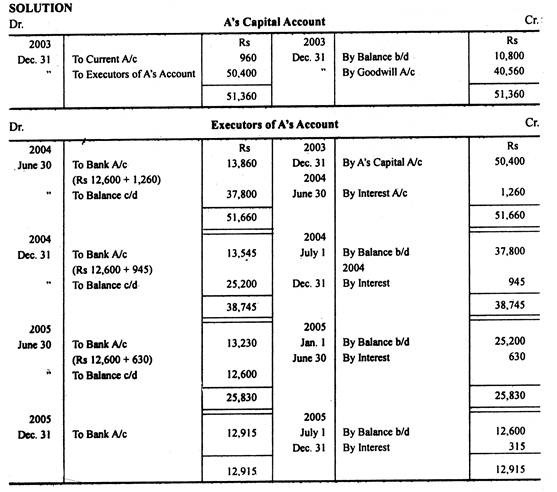
Empirically or past mere inspection we find that in this case, the class interval, 40- 44 contains the largest frequency i.e., xv. And then the empirical or rough mode is the mid-point of the c.i., 40-44.
![]()
If two or more than adjacent intervals accept the same frequency and both are the largest, the mode is considered to exist at the mid-point of the entire range covered past these intervals.
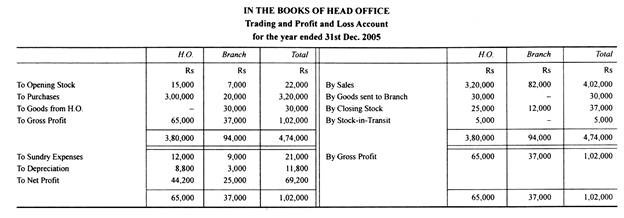
Here both the intervals, xxx-34 and 25-29 have 10 frequencies each. In this ease crude manner is the mid-betoken of the entire range. 25-34 (both c.i. 's combined).
![]()
We may come across some distributions where more than one way could exist observable as in the following examples:

Here both the intervals, 70-74 and 55-59 have 10 frequencies each and these ii c.i.'south are not side by side. Now, we accept two rough modes, one
![]()
This distribution has two empirical modes. Such distributions are called bi- modal. If in that location are more than two modes nosotros call it a multi-modal distribution.
In case of grouped data given in the form of a discrete frequency distribution, a modal value is located but by inspection.
Example eighteen:
Find out the mode of the following distribution:

Here 4 is the variate having 6 as its maximum frequency. Therefore 4 is the way of given discrete frequency distribution.
If we draw a frequency polygon or a histogram of a given distribution then the way is the value of the variable at which the curve reaches its maximum, i.e.,
It is that variate the concentration of value is maximum.

In the above histogram and frequency polygon we may notice that the distribution has two peaks, one at score 6 and the other at score 10. Hence it represents a unimodal distribution having 2 modes at 10.

In the higher up histogram and frequency polygon nosotros may notice that the distribution has ii peaks, one at score 6 and the other at score sixteen. Hence information technology represents a unimodal distribution having 2 modes at 6 and 16. Some distributions can even be multimodal i.due east., having more than ii modes.
We may define, "Fashion equally the betoken on the scale of measurement with largest frequency in relation to other frequency values in the neighbourhood".
2. True Mode:
Grouped Data:
In a frequency distribution the truthful mode is the indicate of greatest concentration or the peak indicate of the distribution. Prof. Karl Pearson has found that in a moderately asymmetric or skewed series where Due north is large a pertinent relationship exists among the mean, median and mode. In such series the distance between the mean and median is i/3rd of the distance between the mean and mode.
Case 19:
Notice out the Mode from the following distribution:

Merits of Mode:
ane. It possesses the merit of simplicity. In a discrete series, the way can be located even past inspection.
2. Information technology is ordinarily understood. A manner is an average which people use in their 24-hour interval-to-twenty-four hours expressions; due east.g., sale of a commodity, size of families, etc., are expressed in their manner values.
3. Unlike the mean, information technology cannot exist a value which is not establish in the series.
4. A mode is not affected by the values of extreme items, provided they adhere to the natural law relating to extremes.
5. It can be adamant from an open up ended class interval.
For determination of mode it is not necessary to know the values of all items of a series. If the point of maximum concentration is known, it is enough.
6. Information technology helps in analysing qualitative information.
vii. Mode tin also be adamant graphically through histogram or polygon.
Demerits :
1. Mode is not defined rigidly like mean.
2. It does non include all the observations of a distribution simply on the concentration of frequencies of the items.
3. Further algebraic treatment cannot be done with mode like mean.
iv. Way cannot be determined from unequal class intervals.
five. In that location are different methods and dissimilar formulae which yield different results of style and so information technology is rightly remarked equally the most sick-defined average.
six. Mode has the limitations associated with the scale of measurement for which it stands.
vii. Way can obviously non be subjected to further statistical anlaysis.
8. It remains as but a crude estimate. Sometimes we may come across bimodal distributions (having 2 modes) and we do not hands find 1 blended measure.
We may examine the following ii situations and appreciate the limitations of mode:
State of affairs I:
The scores of thirty students in a test are:
21, 22, 37, 45, 66, 32, 64, 65, 67, 66, 67, 65, 67, 38, 66, 66, 65, 32. 66. 67, 65, 64, 64, 67, 52, 47, 67, 68, 67, 70.
Situation II.
The scores of xxx students in a test are:
17, xviii, twenty, 23, 24, 24, 25, 24, 24, 24, xxx, 35, forty, 46, 48, l, 56, 62. 62, 62, 62, 60, 47, 38, 62, 62, 24.. 28, 62,
An inspection of state of affairs I gives the mode of 67 while the side by side scores of 64, 65 and 66 seem to be equally potent to become style. In situation II we notice a bimodal distribution having two modes at 24 and 62 equally both seem to exist equally frequent in their places. Nosotros may thus conclude that way is only a crude measure which can exist of value when a quick and rough approximate of central trend is required
Uses of Manner :
Style may exist used in the following situations:
one. When the nearly typical value is wanted as a mensurate of central tendency. For instance, the most liked boy in the class, the virtually popular belief of students about vocational courses etc., etc.
2. When a quick and approximate measure of primal trend is required.
3. When it is necessary to find out the betoken of maximum concentration.
4. When data is incomplete or the distribution is skewed, where most of the values are towards the extremes.
Source: https://www.yourarticlelibrary.com/education/statistics/measures-of-central-tendency-mean-median-and-mode-statistics/91992
Post a Comment for "what is the tendency for statistical results to fluctuate from one sample to another"